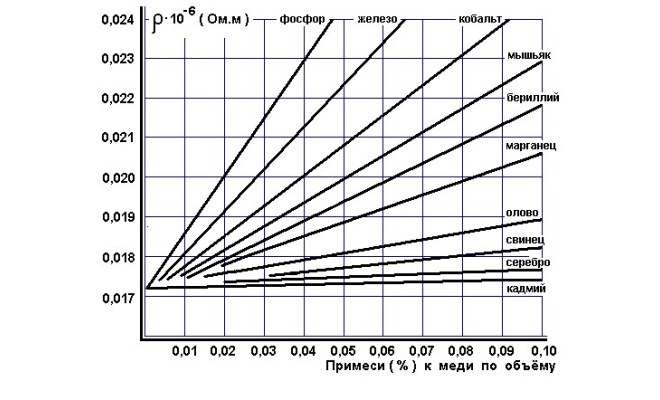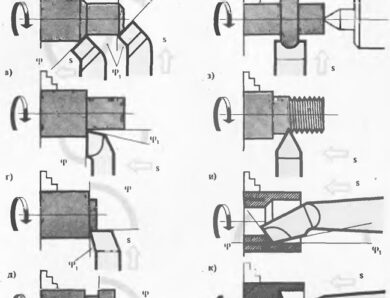
Specific resistance of copper - basic data
The term "resistivity" denotes a parameter, possessed by copper or any other metal, and is quite common in special literature. It is worth understanding, what is meant by this.

One of the types of copper cable
General information about electrical resistance
To begin with, the concept of electrical resistance should be considered. As you know, under the action of electric current on the conductor (and copper is one of the best conductive metals) part of the electrons in it leave their place in the crystal lattice and are directed towards the positive pole of the conductor. However, not all electrons leave the crystal lattice, some of them remain in it and continue to rotate around the nucleus of the atom. Here are these electrons, as well as atoms, located in the nodes of the crystal lattice, and create electrical resistance, which prevents the movement of released particles.
This process, which we briefly described, characteristic of any metal, for copper including. Naturally, that different metals, each of which has a special shape and size of the crystal lattice, resist the movement of electric current on them in different ways. Якраз ці відмінності і характеризує питомий опір міді — показник, individual for each metal.

Specific electrical resistance of some substances
The use of copper in electrical and electronic systems
To understand, the reason for the popularity of copper as a material for the manufacture of elements of electrical and electronic systems, it is enough to look in the table of values of its specific resistance. In copper, this parameter is equal to 0,0175 Ohm * mm2 / meter. In this respect, copper is second only to silver.
It is the low resistivity, measured at temperature 20 degrees Celsius, is the main reason for that, that almost no electronic and electrical device can do without copper today. Copper is the main material for the production of wires and cables, printed circuit boards, electric motors and parts of power transformers.
Low resistivity, which characterizes copper, allows you to use it for the manufacture of electrical devices, characterized by high energy-saving properties. in addition, the temperature of copper conductors rises very slightly when an electric current passes through them.

Залежність питомого опору міді від температури
Which affects the value of resistivity?
It is important to know, that there is a dependence of the resistivity on the chemical purity of the metal. At the maintenance in copper even insignificant amount of aluminum (0,02%) the value of this parameter can increase significantly (to 10%).
This coefficient is also affected by the temperature of the conductor. This is due to the fact, that with increasing temperature, the oscillations of metal atoms in the nodes of its crystal lattice increase, which leads to that, that the resistivity increases.
That is why in all reference tables the values of this parameter are given taking into account the temperature 20 degrees.
How to calculate the total resistance of a conductor?
Know, чому дорівнює питомий опір міді, important for that, to perform preliminary calculations of the parameters of electrical equipment in its design. In such cases, determine the total resistance of the conductors of the designed device, having a certain size and shape. Looking at the value of the resistivity of the conductor in the reference table, determining its size and cross-sectional area, you can calculate the value of its total resistance by the formula:
R = p * l / S
The following symbols can be used in this formula:
- R is the total resistance of the conductor, which must be determined;
- p is the resistivity of the metal, from which the conductor is made (determined by the table);
- l is the length of the conductor;
- S is its cross-sectional area.

Influence of impurities on the resistivity of copper




